How Homemade Brown-and-Serve Dinner Rolls Help Me Sleep Better
Sneak Preview: Having Homemade Brown-and-Serve Dinner Rolls on hand in the refrigerator or freezer gives you one less thing to worry about when preparing a big meal. Use this technique with almost any simple yeast roll recipe. I’ll show you how.
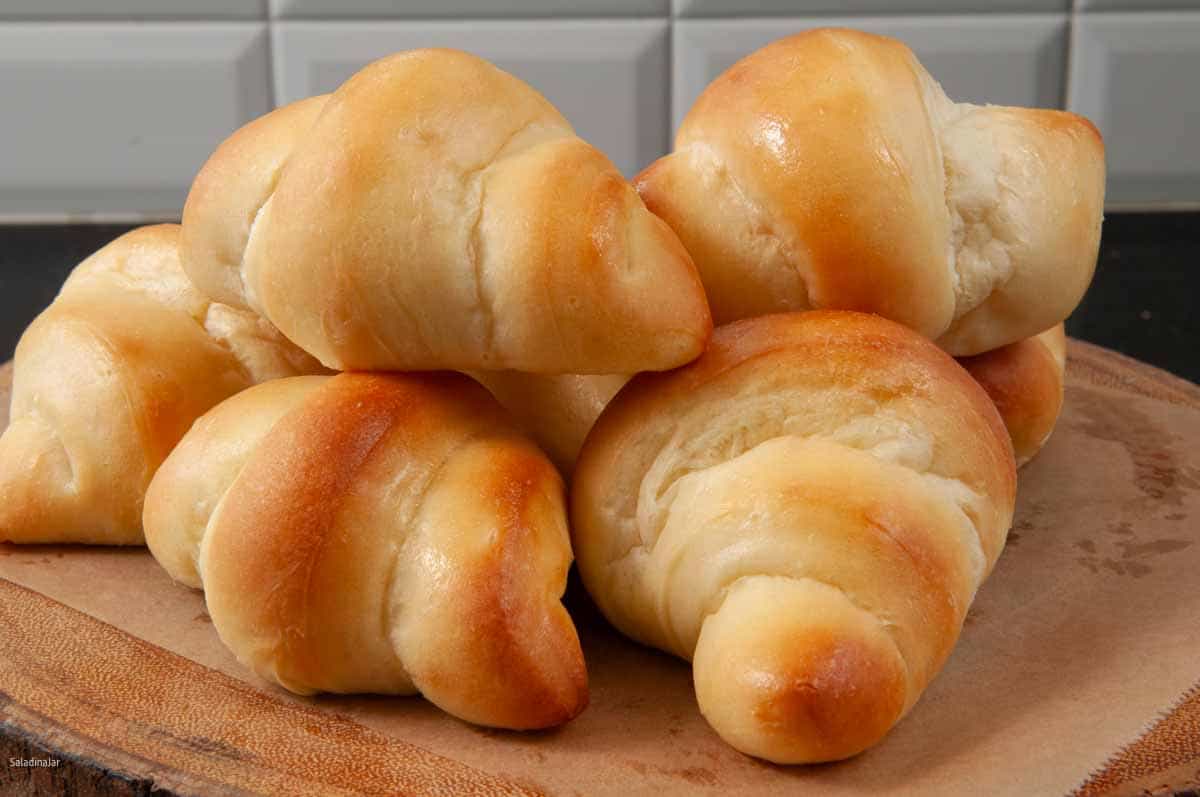
As an Amazon Associate, I earn from qualifying purchases.
Do you ever find yourself lying in bed the night before a dinner party, thinking about the timing of your meal preparation? You would think, after all these years, I would have it figured out–especially the bread.
But unlike pecan pies and Uncle Joe’s favorite orange jello salad that can be prepped in advance, day-old rolls lack that fresh-from-the-oven allure.
My solution? Homemade brown-and-serve dinner rolls.
Three Reasons Why You Need This Recipe
- Preparing the dough ahead of time may help you sleep better the night before a big dinner. You can use this technique with most basic dinner roll recipes. I will use a crowd favorite, my Classic Dinner Rolls in this post.
- Mix and knead the dough using the DOUGH cycle on your bread machine. Follow the directions for how to refrigerate or freeze the dough so that you can bake the rolls on another day.
- If you have a favorite roll recipe you make by hand or with a stand mixer, the process is the same after you make the dough and let it rise the first time. Proceed with confidence.
The Brown-and-Serve Approach Offers Several Advantages
- Make the dough and par-bake the rolls in advance.
- Store the rolls in the freezer for weeks or refrigerate for a few days.
- Bake only the amount required, saving the remainder in the freezer for another day.
- Eliminate the common pitfalls of underproofing or overproofing the dough during hectic meal prep.
📌Kitchen Tips for Success📌
- Stick with simple recipes such as my Classic Dinner Rolls, Japanese Milk Bread Dinner Rolls (using the Tangzhong technique), Sweet Potato Dinner Rolls, or these Cranberry Dinner Rolls.
- Form single rolls (as opposed to a pan of rolls bunched up next to each other, as seen below) to make them easier to bake in the middle without turning brown during the par-bake process. It also simplifies storage and allows for baking only as needed.
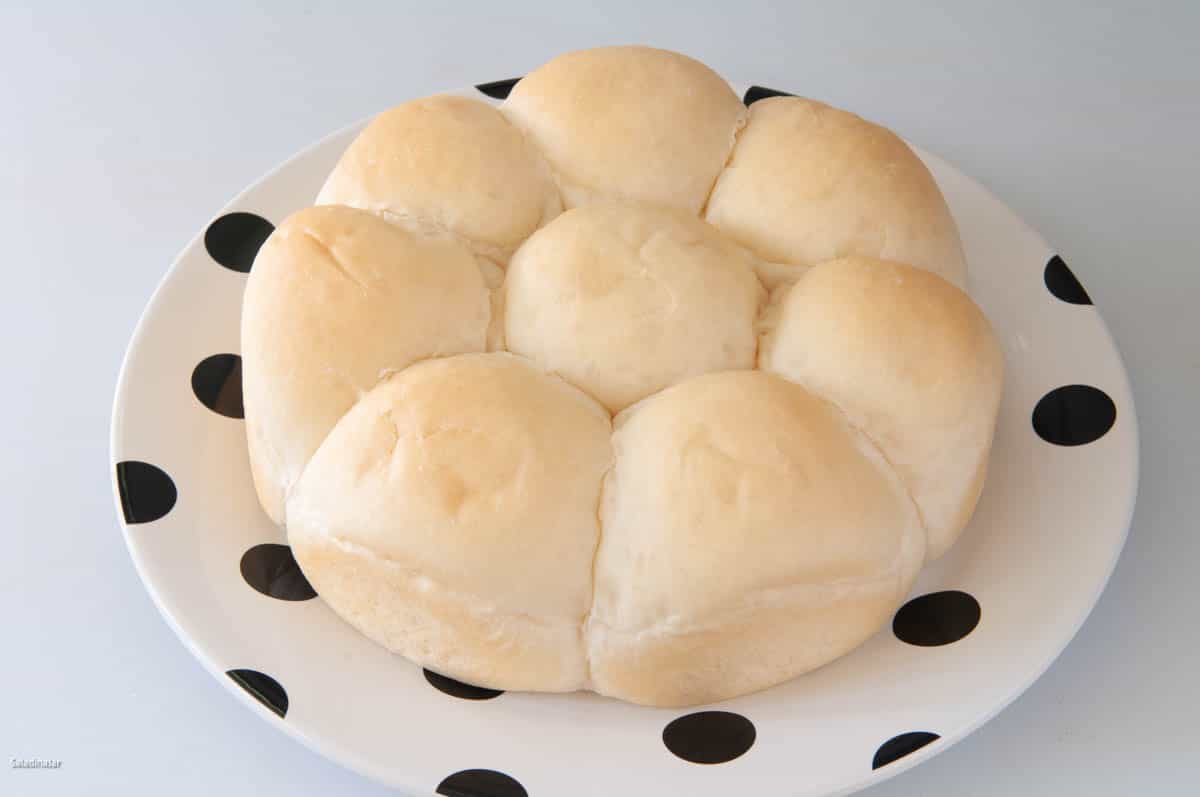
- Brush the rolls with melted butter before and after each trip through the oven to prevent the crust from drying out.
- Handle par-baked rolls with great care! They are fragile. Always use a spatula to move warm rolls off the baking sheet. Even a gentle squeeze can deflate them.
- Use a quick-read digital thermometer to measure the internal temperature, as you won’t have the typical golden brown color to indicate doneness. However, it’s important that the rolls come to 185-190˚F (85-88˚C) on the inside during the par-baking stage.
How To Par-Bake Dinner Rolls
This dough comes from my Classic Dinner Roll recipe (see the video below). You may opt for a different recipe, but whatever recipe you choose should contain enough fat to keep the rolls moist through two baking sessions.
Step 1–Shape the Dough: Once the dough cycle is complete on your bread machine, transfer the dough to a lightly floured surface. A silicone baking mat is handy for this task and easy to clean in the dishwasher.
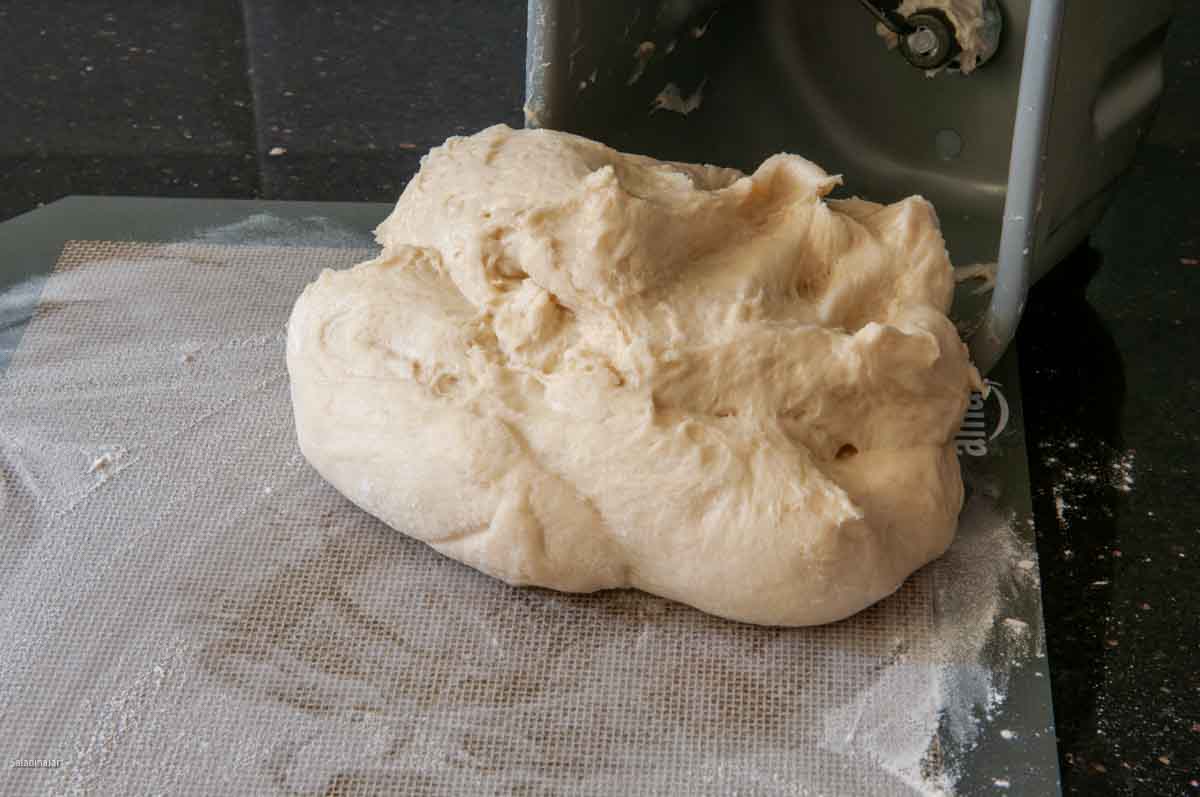
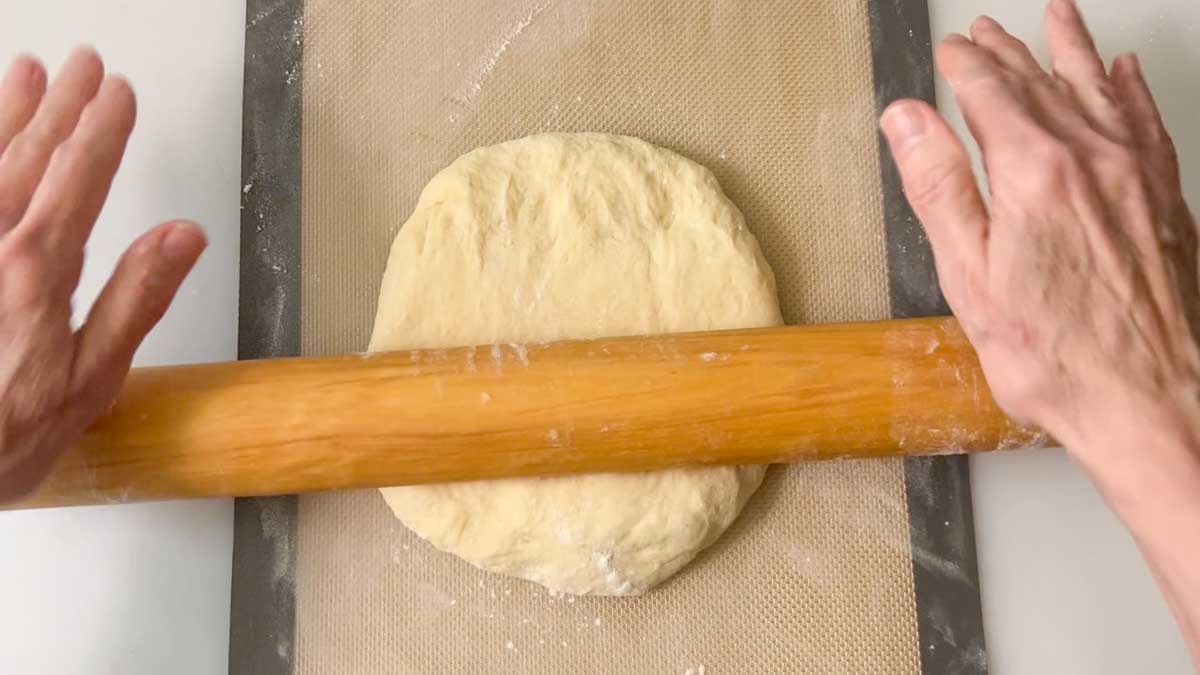
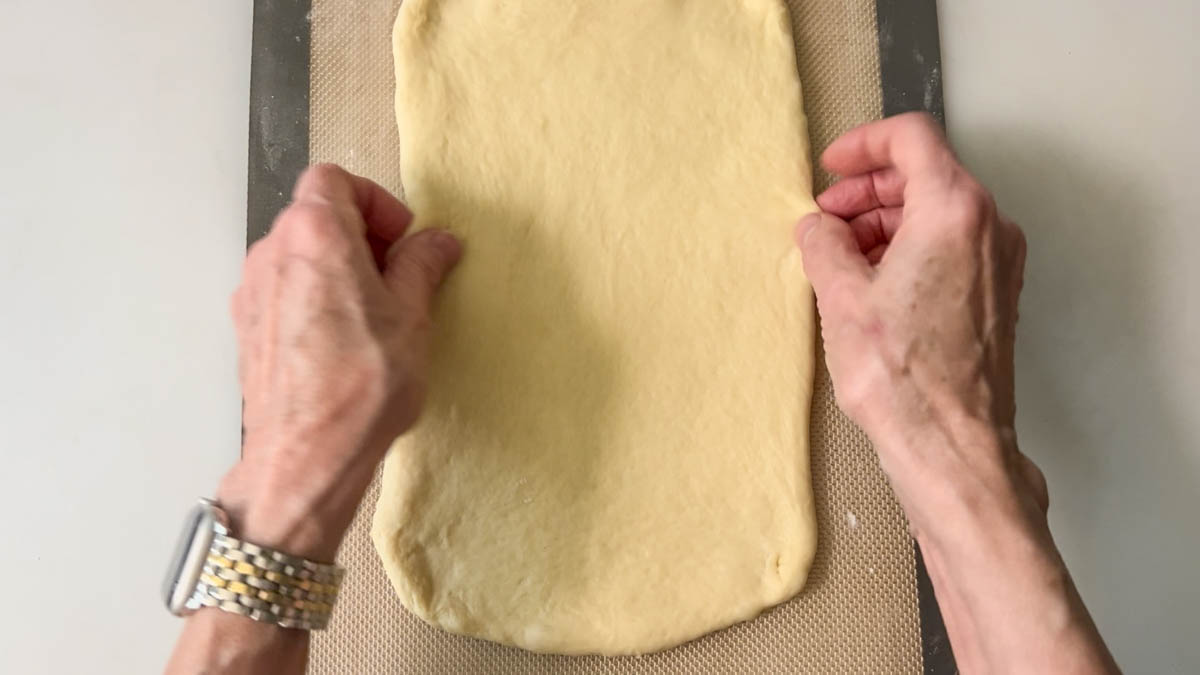
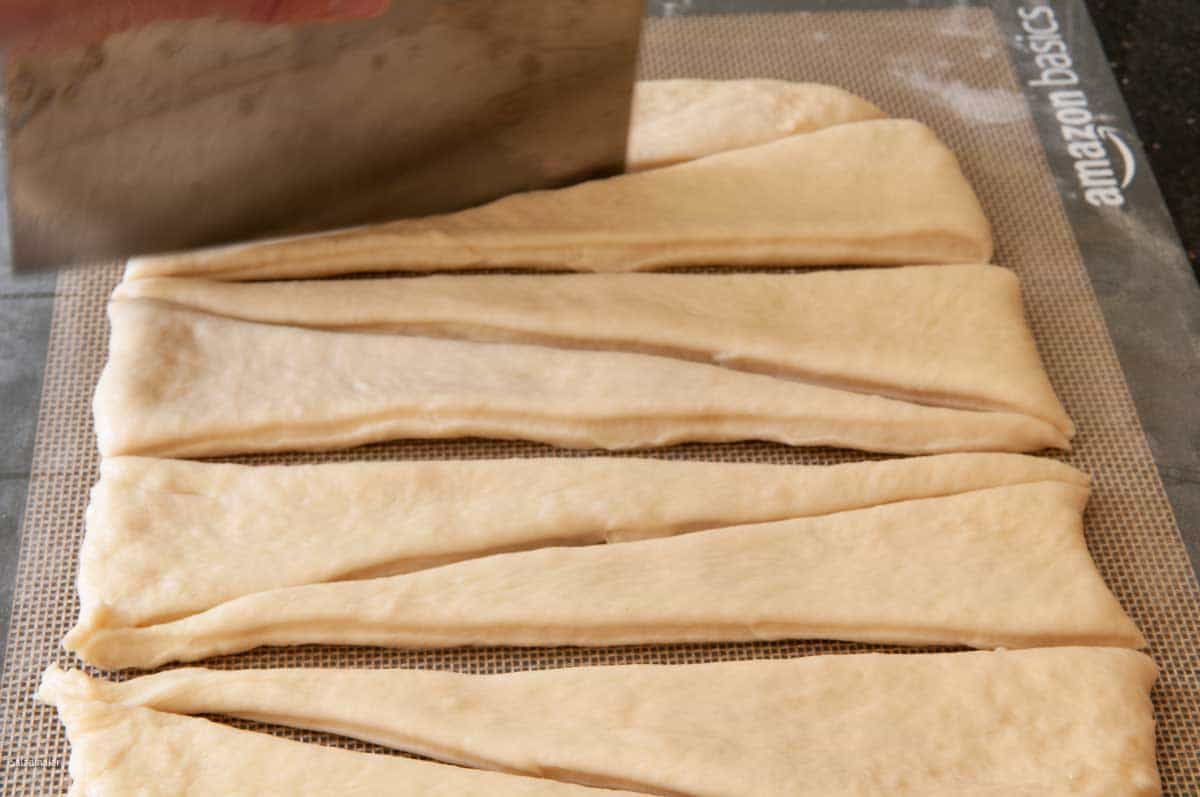
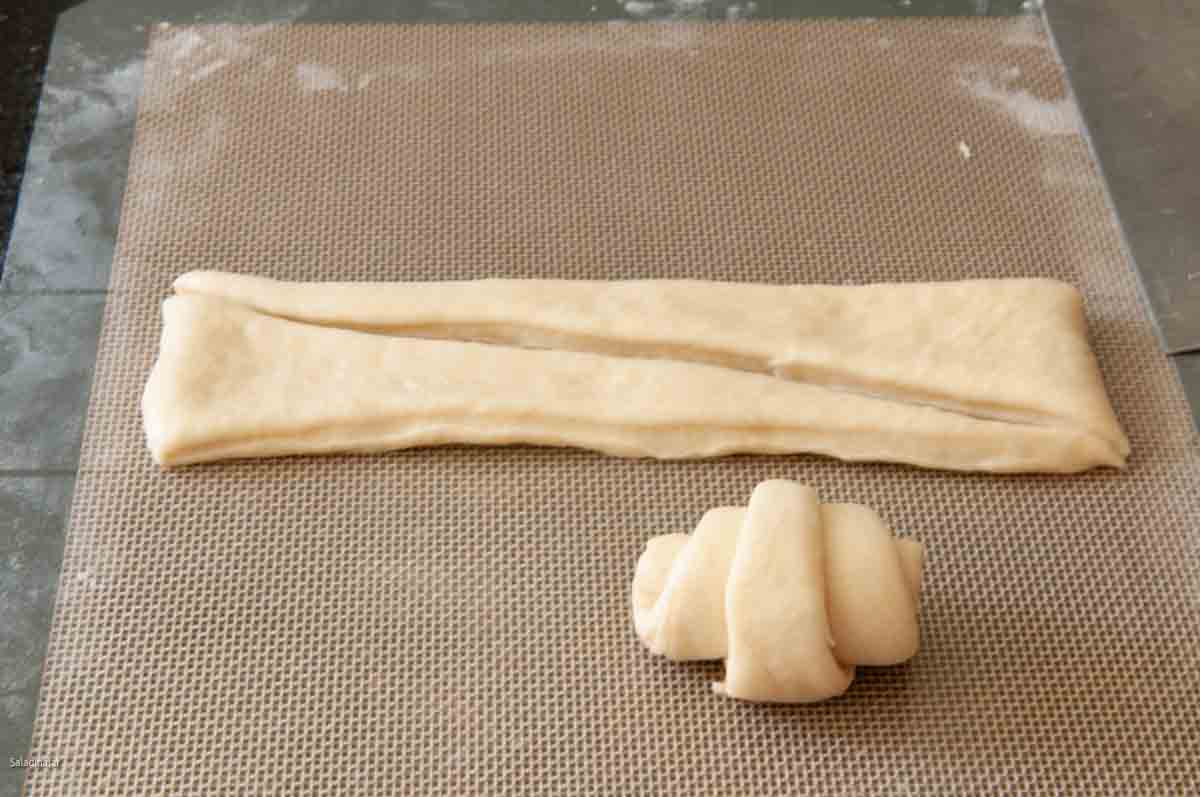
Repeat the shaping process with the other ball of dough. You should end up with 16 rolls total.
Step 2–The final rise: Cover the shaped rolls with plastic wrap or a tea towel for the final rise, allowing them to almost double in size. They should feel soft and fluffy to a gentle knuckle touch on the side. If the dough springs back quickly, it may need more time to rise. Meanwhile, preheat your oven to 275˚F (140˚C).
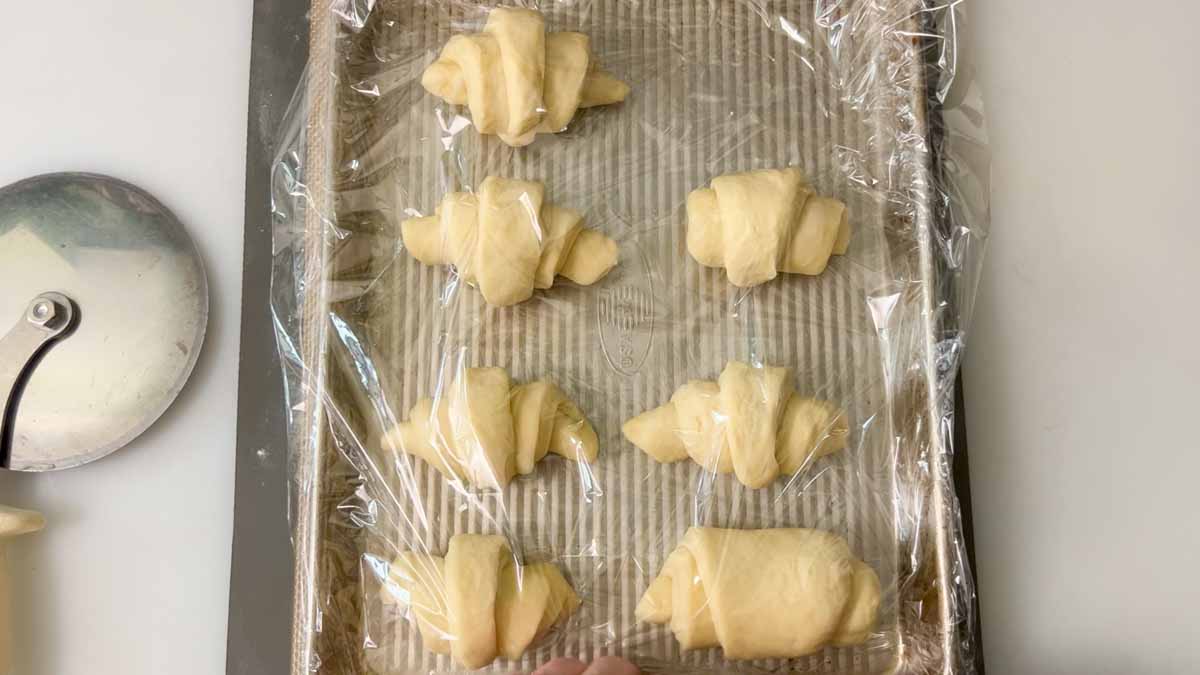
Step 3–Par-bake the rolls: Place the rolls onto the middle rack of your oven and bake for approximately 20 minutes, or until the internal temperature reaches 185-190˚F. You’re aiming for minimal browning while ensuring the rolls are fully baked inside.
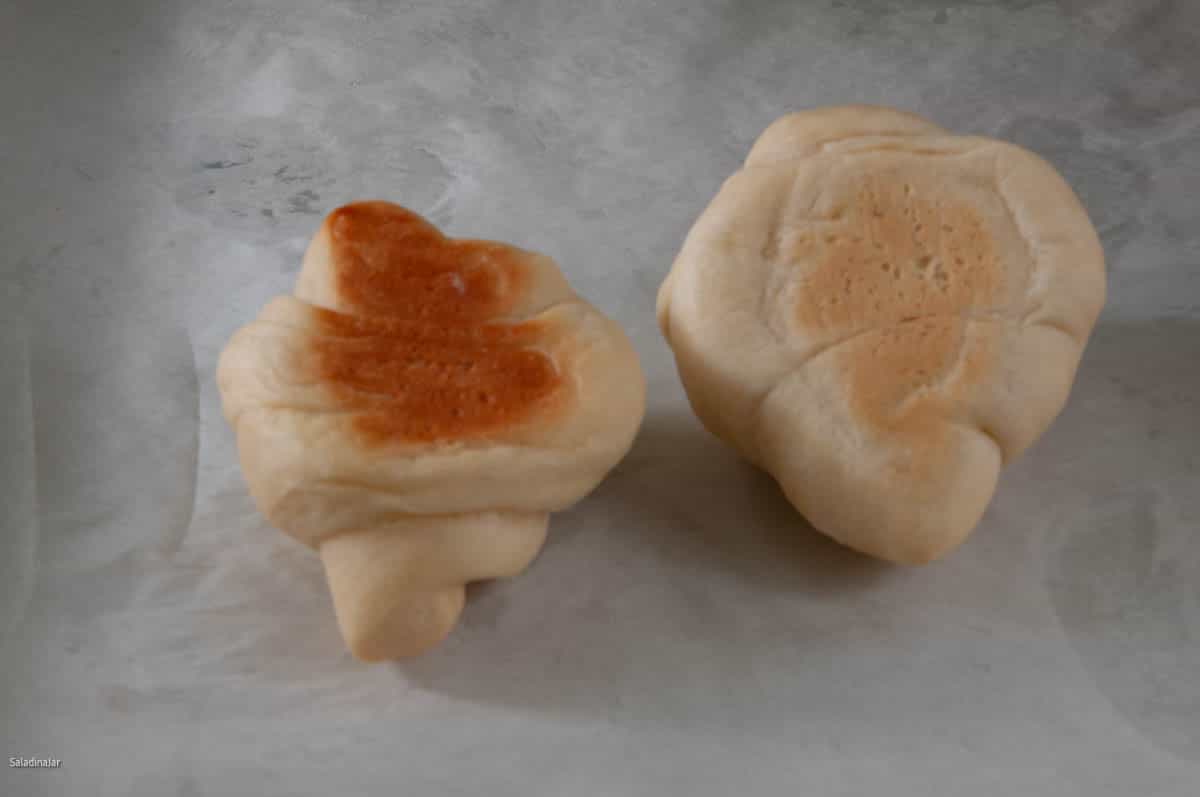
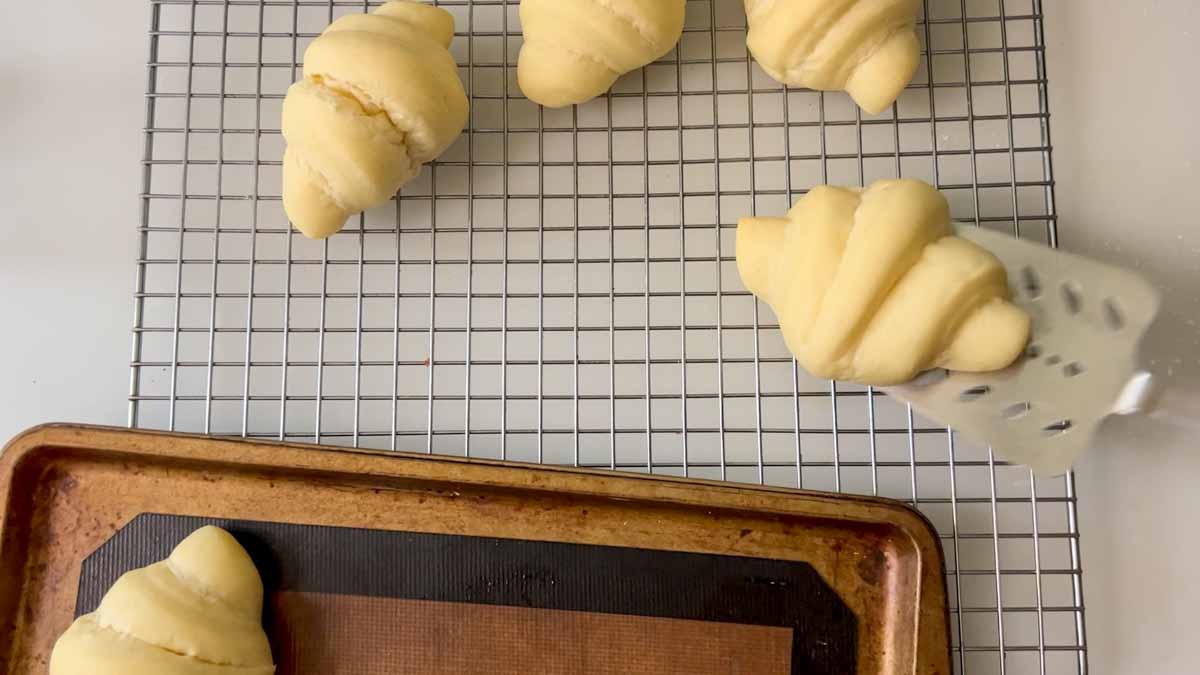
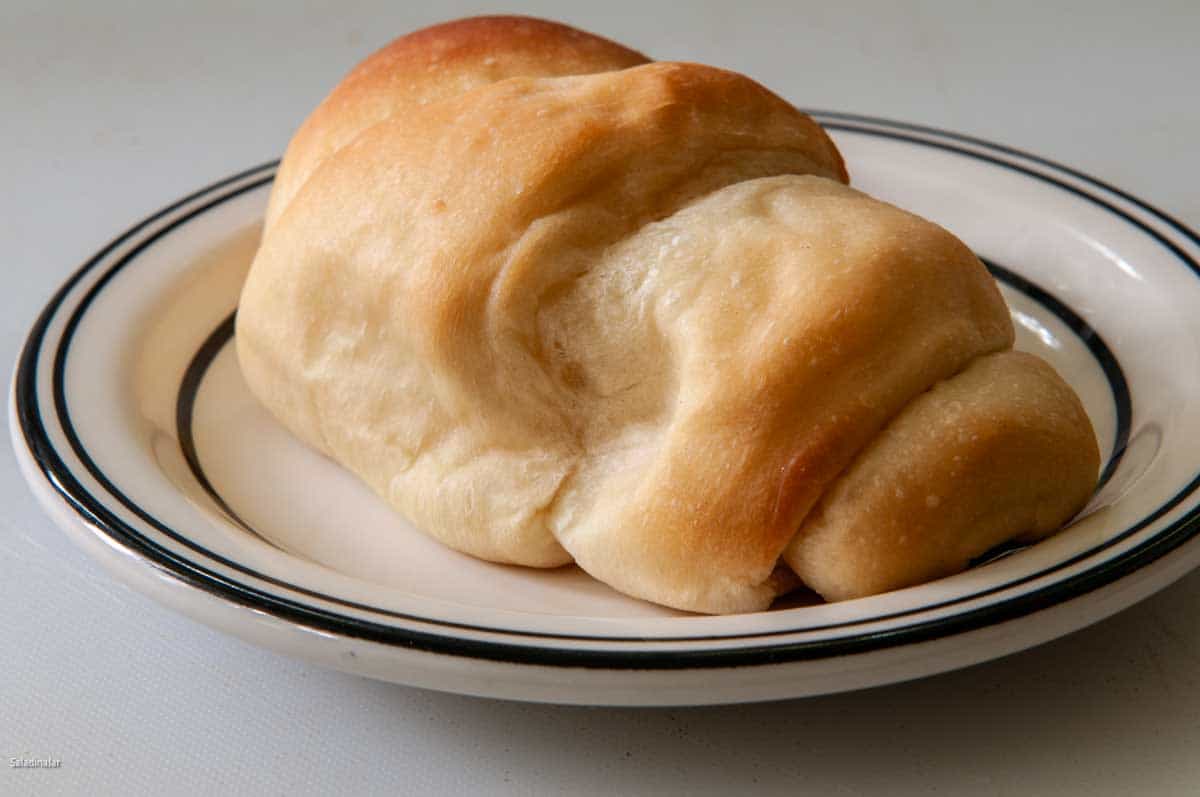
Step 4–Cool and Store:
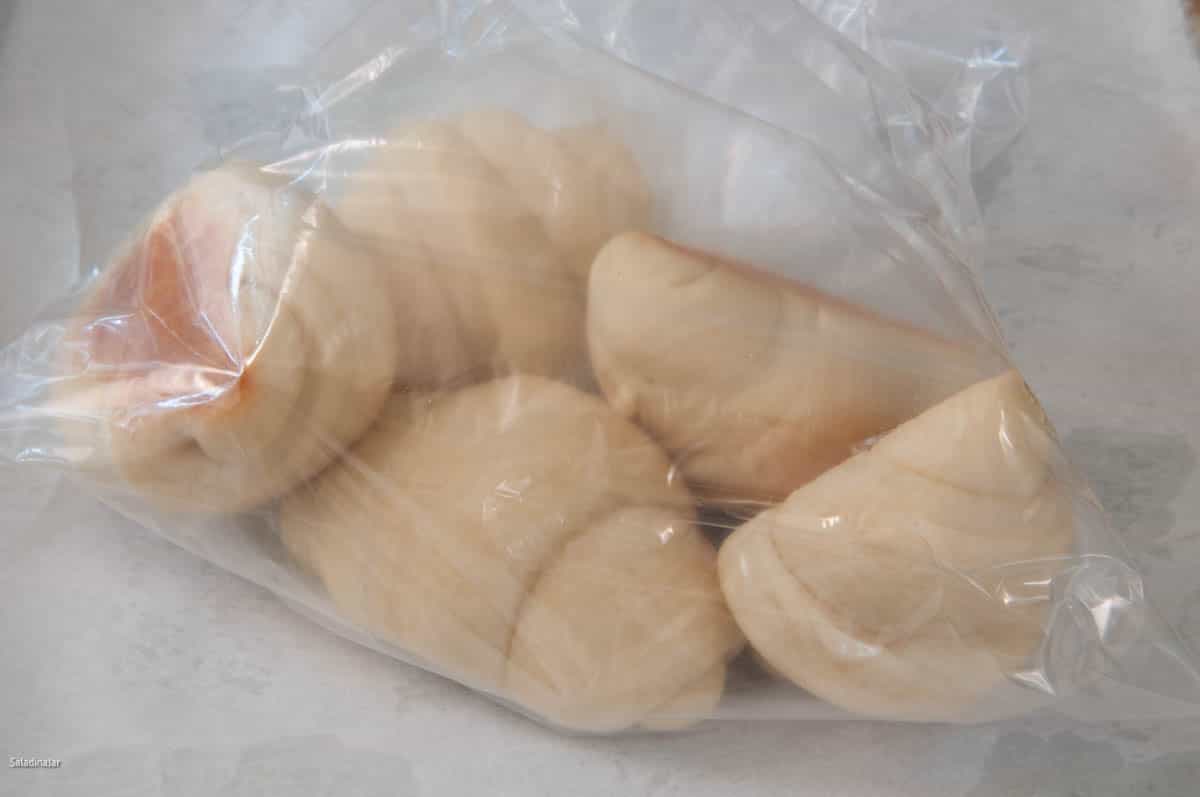
Step 5–Final Bake with Two Options
Option 1: Thaw frozen rolls at room temperature, which takes about an hour in my kitchen.
Option 2: Bake the rolls directly from the freezer or refrigerator, with no thawing necessary for refrigerated rolls.
For both options, brush the rolls with butter and bake at 425˚F (220˚C) for 8-10 minutes until they achieve a golden brown color—frozen rolls might need an additional minute. Brush with butter once more. Allow to cool for 5 minutes before serving.
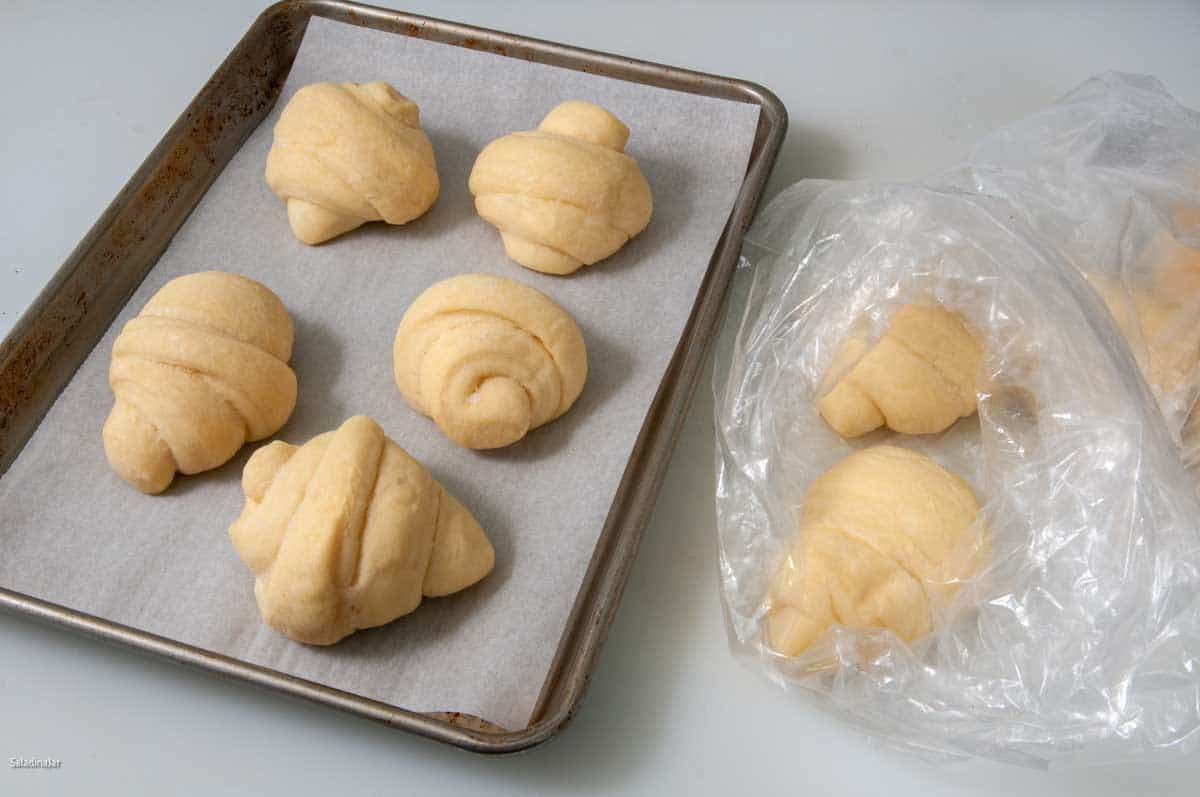
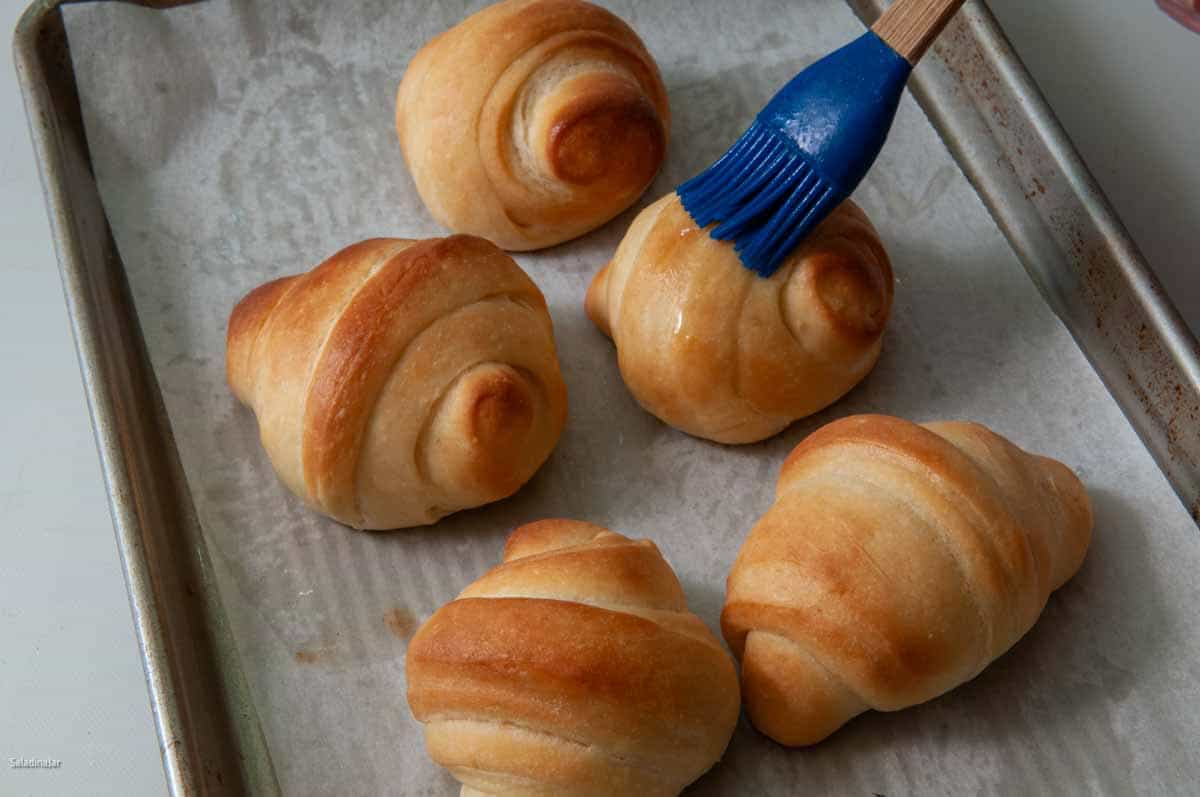
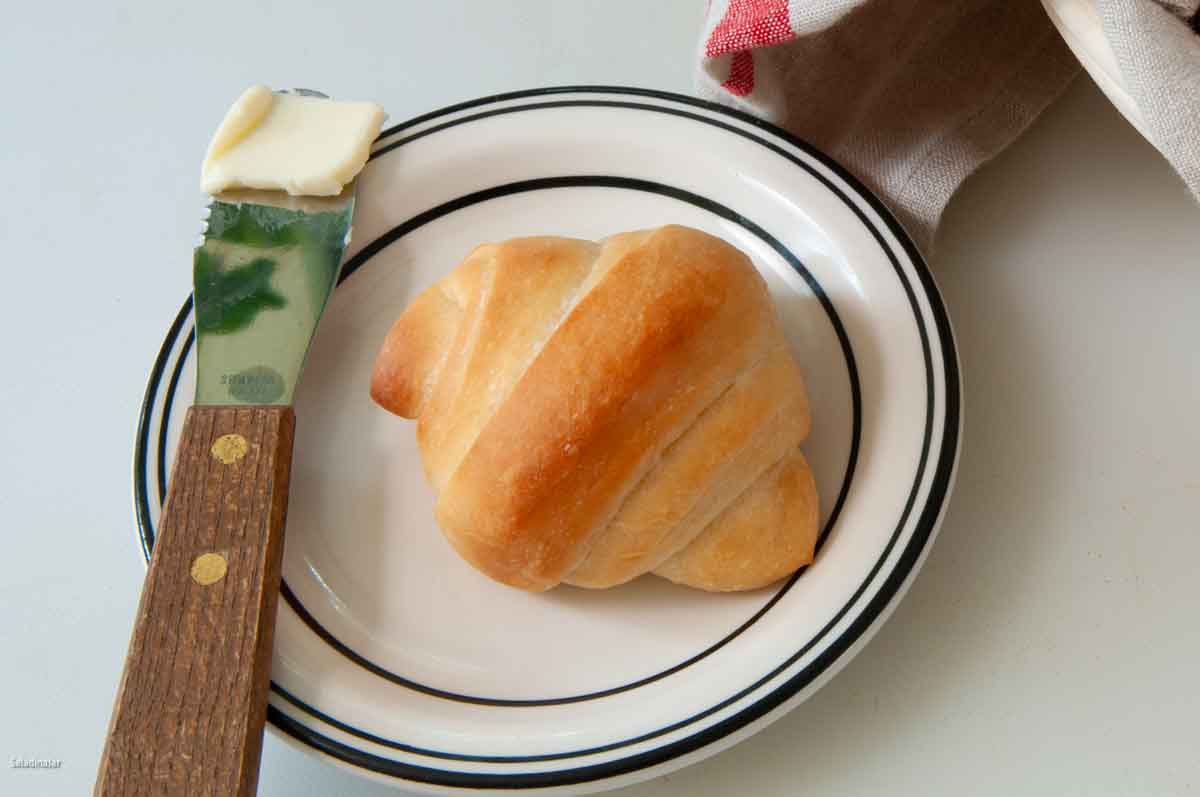
FAQs About Homemade Brown and Serve Dinner Rolls
Yes, you can refrigerate the unshaped dough and bake it the next day. For optimal flavor, aim to bake it within 12-18 hours. Once out of the fridge, let the dough warm up until it’s pliable for rolling and shaping. After shaping, let the rolls rise until they’ve nearly doubled in size, then bake in a preheated oven as per the recipe’s instructions.
Yes, you can freeze the shaped but unbaked rolls, though the flavor might be slightly affected. However, they will still be delightful, particularly if they aren’t frozen for too long. A benefit is that shaped rolls occupy less space in the freezer. Remember to allocate time for thawing and the final proofing.
Here’s how: After the initial rise, roll and shape the dough. Place the rolls onto a baking tray, cover with plastic wrap, and freeze until solid. Then, transfer the frozen rolls into a plastic bag and store them for up to two weeks. To bake, place the frozen rolls onto baking sheets to thaw and proof once more. They should become soft and puffy before baking. The thawing and proofing process can take a couple of hours, depending on room temperature, before they’re ready to bake as instructed in the recipe.
No. The rolls must be baked in a conventional oven to achieve the caramelization and browning necessary for that excellent flavor. Microwave cooking won’t provide the same results.
They probably didn’t get fully cooked. It’s crucial to ensure the rolls are fully cooked internally during the par-baking stage. A quick-read thermometer (paid link) is an essential tool to verify that they’ve reached the desired interior temperature of 185-190˚F, preventing undercooked results.
If you are using good, heavy pans, it is easy for this to happen. Try placing an empty baking sheet on the rack underneath the rolls. You could also try moving the rolls up higher in your oven.
It amplifies the buttery flavor and keeps the crust tender through two bakes.
Traditionally, butter horns are made by rolling the dough into a circle and cutting it into pie-like wedges. However, starting with a rectangle makes a fuller shape with more layers that enhance their appearance and result in more even browning, especially with the brown-and-serve method. It’s worth experimenting with both techniques to find your preference.
Parting thoughts: The tastiest bread typically comes from dough that’s mixed, kneaded, shaped, and baked in the oven with no pre-bake or storage. However, your peace of mind takes precedence. If the brown-and-serve method helps you serve a scrumptious dinner efficiently, then it’s the right choice. Additionally, if you need to transport your rolls and can bake them upon arrival, this method allows that option.
Sharing idea💡: Consider giving par-baked rolls to a friend or neighbor who might be alone during the holidays or embarking on a journey. Don’t forget to add the final baking instructions with your thoughtful gift.
Recipe Help at Your Fingertips: For questions or suggestions, email Paula at saladinajar.com. If you need help, I’m happy to troubleshoot via email (faster than leaving a comment). Attach pictures and as many details as possible for the best advice.
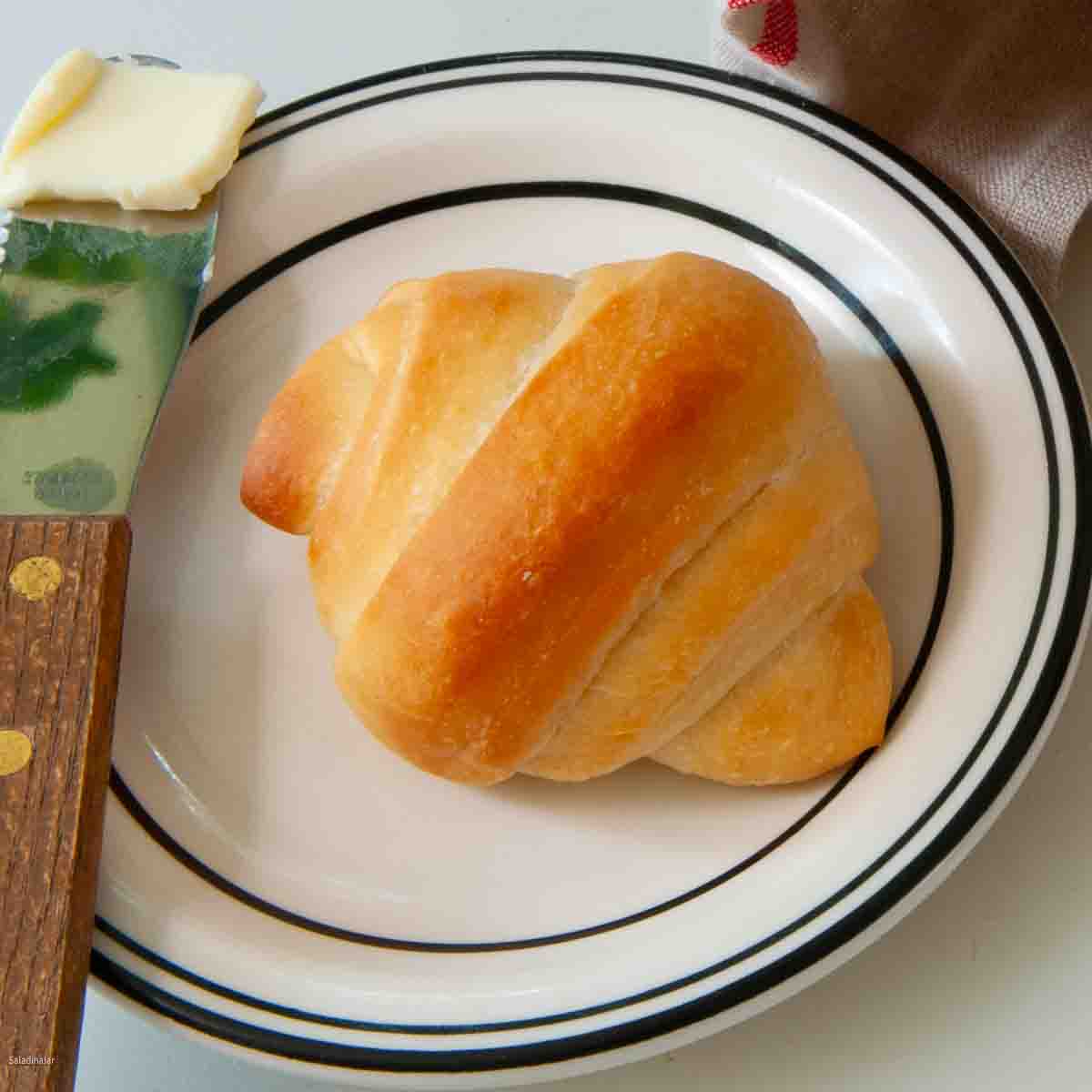
Brown and Serve Rolls Made with My Classic Bread Machine Dinner Roll Dough
Rate this recipe
(5 stars if you loved it)
Ingredients
- 1 cup (227 9) milk
- 1 large (50 g) egg
- 3 tablespoons (36 g) granulated sugar
- 1 teaspoon table or sea salt
- ¼ cup (57 g) unsalted butter, chopped finely
- 3 cups (360 g) unbleached all-purpose flour
- 2 teaspoons instant or bread machine yeast
Instructions
Dough:
- Place 1 cup (227 9) milk, 1 large (50 g) egg, 3 tablespoons (36 g) granulated sugar, ¼ cup (57 g) unsalted butter, chopped finely, 1 teaspoon table or sea salt, 3 cups (360 g) unbleached all-purpose flour, and 2 teaspoons instant or bread machine yeast into your bread machine pan in the order listed. Select the DOUGH cycle and press START.
- Check the dough at least twice during the mixing and kneading phase by lifting the lid to take a peek. The first time, look immediately after the machine starts mixing to ensure the paddles are engaged correctly. The dough should start to form a ball. Look again 10-15 minutes into the DOUGH cycle to assess the consistency of the dough. For most recipes, the dough should stick to the side, then pull away cleanly.If your dough is too wet, add flour one tablespoon at a time.Conversely, if the dough is too dry, add one tablespoon of liquid at a time until the dough looks just right. Read more about this surprising secret to success with a bread machine here.
- When the dough cycle finishes, the dough should be doubled in size. If not, leave the dough in the bread machine for a few more minutes until you can punch two fingers into the dough, and it fills in gradually. If it doesn’t fill in, it has risen too much. Compress the dough and try again. If the dough bounces right back and the dough fills in immediately, then it needs to proof (rise) a little bit longer. (This may happen if your kitchen is cold.)
Shaping rolls:
- Pull the dough out of the machine and onto a floured surface. Lightly knead the dough to remove any large bubbles, and form it into one large ball. Divide in half, making two equally sized balls.
- Roll one dough ball into an 8 x 10 rectangle (approximately). With the short side closest to you, divide the dough in half crosswise. Then, divide each square in half crosswise. You should have four rectangles. Divide each rectangle diagonally to form 8 long and skinny triangles.
- Roll each triangle into a butterhorn shape by starting with the wide end of the triangle and rolling toward the point. Pinch the point to anchor it to the roll. Place the butterhorn roll onto a prepared cookie sheet (greased, parchment paper, or a silicone baking mat) with the point underneath.
- Repeat the roll-out procedure with the other dough ball. You should end up with a total of 16 rolls.
Par-bake:
- Let the rolls rise until they are almost doubled (soft and puffy). Preheat your oven to 275˚F (140˚C).
- Brush the rolls with melted butter. Bake the rolls for 20 minutes. Don’t let them turn brown, but make sure they cook all the way through. The internal temperature should reach 190˚F (88˚C).Remove the rolls from the oven, brush them with butter, and let them cool for 5 minutes on the tray. Using a spatula, carefully remove them to a cooling rack. Leave them there for an hour before placing them into a plastic bag, preferably double-bag for the best protection. Refrigerate 3-4 days or freeze up to two weeks. (I like to be conservative with the time.)
Final Bake (Browning):
- If frozen, you can choose whether to allow the rolls to thaw or bake them straight out of the freezer. Position the rolls on a baking sheet and brush with melted butter. Bake in a preheated oven at 425˚F (220˚C) for 8-10 minutes or until golden brown. Brush the rolls with butter one last time and serve immediately.
- If refrigerated, position the rolls on a baking sheet, brush the rolls with melted butter, then bake in a preheated oven at 425˚F (220˚C) for 8-10 minutes or until golden brown. Brush the rolls with butter one last time and serve immediately.
Notes
- In a heavy-duty stand mixer, add the ingredients to the bowl in the specified order.
- Begin mixing on low speed until all the ingredients are moistened.
- Switch to a dough hook attachment and increase the speed to 2 or 3.
- Continue beating/kneading until the dough becomes smooth and elastic, typically about 5-10 minutes.
- Cover the dough and let it rise in a warm place.
- Once risen, gently deflate the dough and shape it as the recipe directs.
- Combine all the ingredients in a large bowl until they form a shaggy ball.
- Turn the dough out onto a floured surface.
- Knead the dough with your hands until it becomes smooth and elastic, which may take around 10-20 minutes, depending on your experience.
- Place the dough ball in a greased bowl.
- Cover the bowl and allow the dough to double in size.
- After rising, gently deflate the dough and shape it according to the recipe’s instructions.
Equipment
Nutrition
All images and text ©️ Paula Rhodes for Salad in a Jar.com

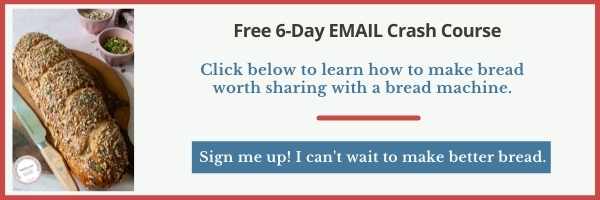

Paula Rhodes, owner
As a retired home economist, I created Saladinajar.com to share my belief that you don’t have to be a chef to find joy in creating homemade food worth sharing. Bread machines (used in an unconventional way), homemade yogurt, and quick microwave recipes are my specialty.